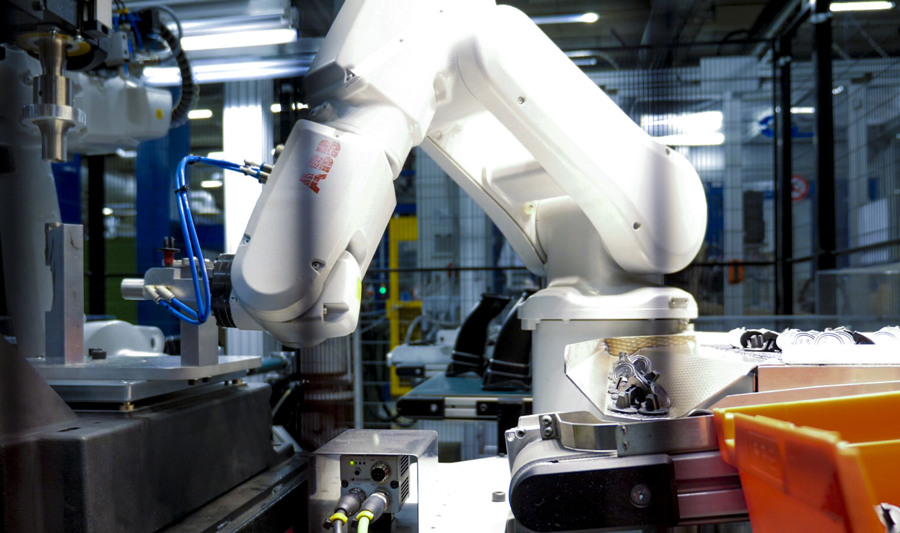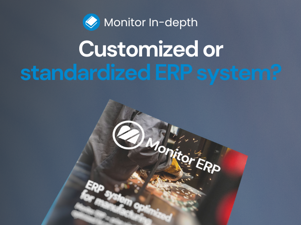Machine Integration – The Future Smart Factory
With the advent of communications technology, especially the Internet of Things (IoT), virtually any part of your manufacturing process can be connected. Connectivity is the basis for establishing a Smart Factory and progress towards Industry 4.0.
Having the ability to connect devices enables communication between all points on the shop floor and this is the basis of Machine Integration. It is the combination of several control computers into a system of connected machines with the purpose of raising output levels and reliability.
Machine Integration (MI) takes input data from peripheral points and relays it back to a central system where it is processed, stored, and sent to designated points. This integrated approach to collecting data allows complex tasks to be accomplished at a higher accuracy and efficiency level. Manufacturers have been collecting data from across the manufacturing floor for decades, but it was a tedious task that often proved to come with many errors (often human) as well. This would result in erroneous calculations that can seriously mess up production plans.
However, the costs of smart sensors have significantly gone down in recent years, making implementation affordable and accessible to more SME manufacturers. As a result, more manufacturers are now able to go beyond simple data capture and extrapolate near real-time insights to optimize manufacturing processes immediately.
But what do manufacturers gain by making their facility a smart factory?
As it turns out, there’s lot to gain from Machine Integration according to McKinsey Global Institutes’ landmark study, “The Internet of Things: Mapping the Value Beyond the Hype”.
One of the most obvious gains of Machine Integration is Operations Optimization. The use of sensors to collect data instead of human judgement eliminates inefficiencies and inaccuracies caused by human error. Data collected from production machinery gives manufacturers the ability to adjust workflows. eliminate unproductive processes and performance bottlenecks.
Machine Integration makes it possible to Remotely Monitor and Track machines. Using MI, it is possible to increase Overall Equipment Effectiveness (OEE) by optimizing machines based on the data collected from different parts of the factory. Having the ability to Monitor all machines in the production flow remotely from a central system gives manufacturers the power to react quickly to various issues on the production floor and increase OEE. Manufacturers can expect higher throughput, less down time, less scrap, rework, and lower operating costs by optimizing their operations based on accurate data collected via Machine Integration.
It also encourages continuous improvement initiatives by increasing the engagement rate of front-liners through heightened responsiveness, and accountability. Manufacturers can level-up their game with MI as sensor technology allows improved process control and traceability.
The current reality though, sees many manufacturers often claiming that their masterplan looks good and that they should be able to meet their customer requests. The result, however, is usually far from expected as they struggle to meet promised delivery dates. This causes manufacturers to wonder what went wrong. Could it be a hiccup in the supply chain or low-quality stock balances? Many reasons may come to mind, but none can be confirmed without facts and figures.
Another common mistake is that manufacturers often overestimate the actual capacity they have. This happens because they are configuring their work center capacity based on feelings instead of facts. What is worse is planners tend not to update capacity changes whenever actual circumstances change.
This leads to a planning situation that is commonly referred to as Fire Fighting planning. It is a situation where batch sizes and work schedules need to be frequently adjusted and reprioritized. Fire Fighting planning usually leads to an overall lower delivery performance.
Take for instance a daily capacity plan that assumes stock balances are recorded correctly, and a ready supplier base that can fulfill the manufacturers’ requested demands. What are the common issues that are visible when its capacity related problems are analyzed? Are there any familiar patterns?
To put things into perspective, we will take a CNC metal manufacturing company as an example scenario. The company has invested millions of ringgits in their multipurpose milling machines and a particular machine operates a 12-hour daily shift for five days a week. This should effectively give us an available capacity of 60 hours per week.
Experienced manufacturers understand that they cannot plan with a capacity of 60 hours per week. This is because there are other variables to take into consideration, such as machine maintenance, breakdowns, urgent rework orders and other wasteful activities that will affect the effective capacity. It is usually expressed as a percentage of gross capacity a.k.a. availability factor.
Unfortunately, this value is often based on gut feelings instead of actual figures as well.
The effective capacity is only 48 hours per week if the planning parameter for that work center is based on a daily 12-hour operation for 5 days a week running at 80%. In Monitor’s experience though, even 80% is more wishful thinking rather than reality.
Next, we need to look at operational data to achieve high quality capacity planning. What this means is that manufacturers need to look at their BoM and routing to make sure that it is set up correctly to capture accurate cycle times. Again, as before, this crucial data is commonly based on best case scenarios instead of real cycle times.
How then can manufacturers gather accurate operational data? Should it be based on given feedback from post-calculations or should operators adjust planned cycle times? Or perhaps the first given value should be used as the default value for the entire lifecycle of producing a part?
Traditionally, all these data are collected manually from human input. Operators may write down output, time used for a job, down time, and other parameters on a job order document. The document is passed around to different personnel and finally to the production supervisor who is tasked with reading the piece of often soiled paper with not the best handwriting. As is common with data, if we have rubbish in, we will have rubbish out, this is what’s happening as the production supervisor tries to read scribbles of barely legible text on stained paper, the data entered may not be the most accurate. How then can production planning be carried out efficiently and accurately if the data received was not accurate to begin with?
The environment for workers to collect data is not ideal to begin with, resulting in bad handwriting. To top it off, it is not possible to get pinpoint start and stop times recorded manually on the shop floor. Also, there is also a delay in relaying information to all levels in the company. A delayed report to other departments could mean a missed delivery even if the product is available for delivery. Fortunately, we live in an era where sensors, IoT and Machine Integration allow manufacturers to gather accurate data.
Even though modern technologies are great at gathering data, but without an integrated system to process said data, it would not be of much value to the manufacturer. This is why a robust ERP system is needed to fully realize the value of the Big Data that can be gathered from Machine Integration.
By connecting machines to an ERP system, a bridge is created between planners and operators as well as other departments in the company. Every single process can be synced to check for availability of materials, capacity; breakdowns can also be instantly reported, and even idle machines can ping its status so that workers can attend to it immediately.
An integrated system also helps manufacturers get documentation aligned, with no more misplaced, missing or versioning issues with production documents. It also helps the environment by cutting down on the need to print tons of documents daily. Space can also be better utilized with fewer physical documents to store.
Most importantly, production planning can now be carried out efficiently and accurately. This not only results in higher OEE levels but also leads to consistent on-time deliveries and less wastage in capacity. It is awfully expensive for companies to have pricey machines sitting idly by or not running at optimal levels.
To give perspective on how costly idle machines may be and how they can affect product pricing, let us do a simple calculation. If a machine costs RM175,000 annually and work is done 12 hours daily for 260 days a year, there will be a total of 3,120 work hours a year. Now we take the annual machine cost over the total work hours a year to get the utilization percentage as below:
RM175,000/3120 hours = RM56/hour at 100% utilization
RM175,000/2496 hours = RM70/hour at 80% utilization
RM175,000/1872 hours = RM93/hour at 60% utilization
As shown above, at 100% utilization levels, the cost to produce an item is the lowest. However, that would be an inaccurate way to calculate the selling price of a product. Even though customers would be pleased with a lower selling price, it will come back to bite manufacturers later when they do not meet their annual bottom line. It would be more efficient instead if the calculation were based on a 60% utilization level and tweaked to reach 80% utilization by using all the data collected for analysis. This will not only increase the contribution margin but will also generate more profit for the company. However, this is only achievable if there is an integrated ERP system in place.
A complete and fully integrated ERP System such as Monitor ERP functions as the thread that connects the data collected, process statuses, and people, in an intelligent manner that creates value. It also helps in improving OEE levels via the data streams collected, helping manufacturers achieve their most critical objectives and increase the company’s bottom line in the long run.






